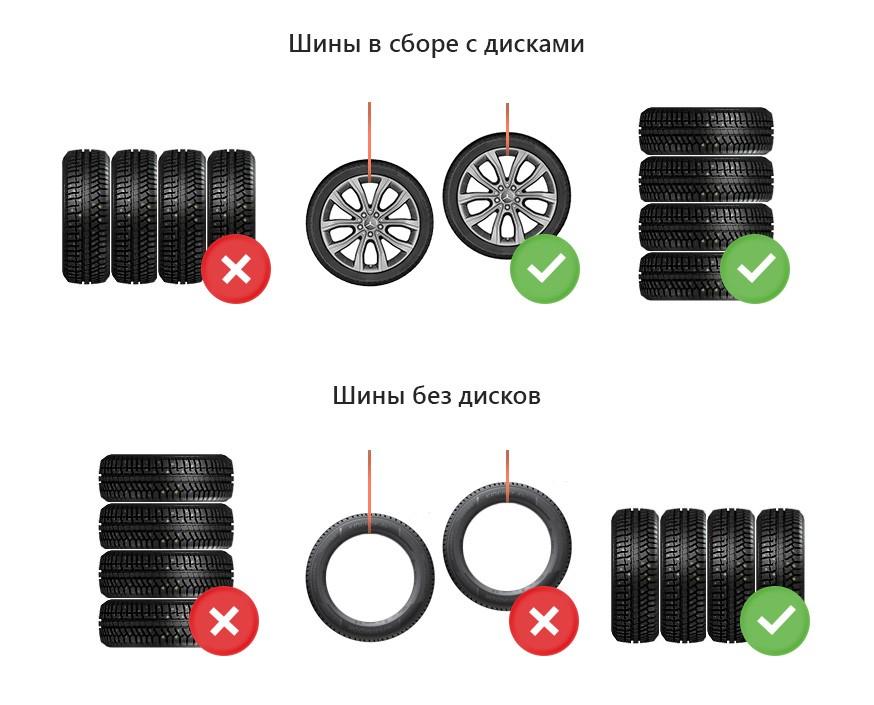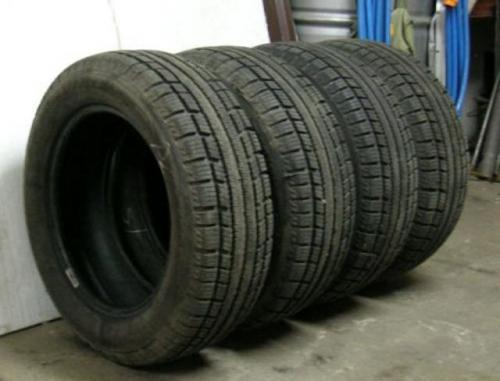
How to store tires Guide
 Seasonal tire replacement is usually associated with the need to store tires or whole wheels that the car has been driven so far for the next few months. How unused tires will "rest" depends on their durability.
Seasonal tire replacement is usually associated with the need to store tires or whole wheels that the car has been driven so far for the next few months. How unused tires will "rest" depends on their durability.
 Those left under the proverbial cloud and thus exposed to changing weather conditions will begin to develop age-related changes in a few weeks, manifested by drying and cracking of the surface. To prevent this from happening, tires should be stored in rooms that meet the relevant conditions. The method of storing tires and its close proximity is also important. Proper storage of tires in conjunction with their proper operation allows you to keep the tires in good condition for several years.
Those left under the proverbial cloud and thus exposed to changing weather conditions will begin to develop age-related changes in a few weeks, manifested by drying and cracking of the surface. To prevent this from happening, tires should be stored in rooms that meet the relevant conditions. The method of storing tires and its close proximity is also important. Proper storage of tires in conjunction with their proper operation allows you to keep the tires in good condition for several years.
Dry, dark, cool
The tire storage area should be dry and protected from the sun, preferably darkened, ventilated or ventilated from time to time.
The temperature in the room should not exceed room temperature.
Substances aggressive to rubber should not be stored near the tires.
Tires should be stored away from open flames, excessively hot parts (such as central heating pipes), and devices such as transformers, welding machines or electric motors that emit ozone harmful to rubber.
Remove all objects with sharp edges from the tire storage area and its immediate surroundings to prevent accidental damage to the tires.
Before they become "mature"
Before removing the tires, it is recommended to mark their position in the vehicle with chalk. This will make it easier for the next season to change the tires correctly (front to rear, on the same side of the car in the case of radial tyres) in order to achieve an even wear rate. Then remove all dirt from the surface of the tire. This applies not only to small stones in the tread grooves, but also to various suspicious substances, stains, etc. The cleaned tire should be washed and dried thoroughly. If the wheels are changed, the rim should also be washed and wiped thoroughly. Finally, it remains, if necessary, to correct the chalk marking of the position of the tire or wheel on the car.
Horizontally or vertically
According to the tire industry, how unused tires are stored depends on whether only tires or entire wheels have been removed from the car. Shelf life also matters.
 If only tires are intended for storage and it should last no more than a month, then you can put them on top of each other, i.e. in the so-called. haemorrhoids. It is recommended that the height of such a pile does not exceed 1,0 - 1,2 meters. Given the typical sizes of modern tires, this gives about 4 - 6 pieces per stack. If the storage period is extended, the order of the tires in the stack should be reversed after approximately four weeks. Do not place heavy objects on the piles as this may deform the tires.
If only tires are intended for storage and it should last no more than a month, then you can put them on top of each other, i.e. in the so-called. haemorrhoids. It is recommended that the height of such a pile does not exceed 1,0 - 1,2 meters. Given the typical sizes of modern tires, this gives about 4 - 6 pieces per stack. If the storage period is extended, the order of the tires in the stack should be reversed after approximately four weeks. Do not place heavy objects on the piles as this may deform the tires.
However, if the tires will be stored in a warehouse for several months, it is best to store them in an upright position and, in addition, on racks installed at a height of at least 10-15 cm from the ground. Therefore, such tires should be turned over less frequently once a month to minimize the risk of deformation.
On the other hand, it is best to store whole wheels by hanging them, for example, on hooks on the wall or on special stands that prevent the wheels from touching each other. All wheels can also be placed individually on the floor, but preferably on something that allows air to enter from below. The classic palette is perfect for this. The wheel inches saved must be inflated to the recommended operating pressure.
It is also permitted to store complete wheels horizontally, one on top of the other, up to a maximum of four per stack. Experts recommend that you first reduce the pressure in the tires so that the wheels rest against the rim, and not against the tire beads.
Stop on wheels
The autumn-winter season is a period when some drivers give up driving completely. If we leave the car in the garage for a longer parking, it would be worth putting it on the so-called. in flyovers, i.e. on supports to relieve the tires. Tires that have to carry the weight of the car and remain in position for a long time, it is easier to detect age-related changes and deformations, especially when the air is gradually released from them.
How much is it
Seasonal tire storage is offered by most tire sales and repair companies. Mechanical workshops or authorized service stations may also offer this service to their customers. The cost of storing tires (or whole wheels) for about six months depends on the location and size of the tires and ranges from PLN 40 to PLN 120. for one set.
Consequences of improper tire storage
– Premature age-related changes in the structure of the tire
– Tire deformation
– Reduced tire life.
– Damage preventing further operation
